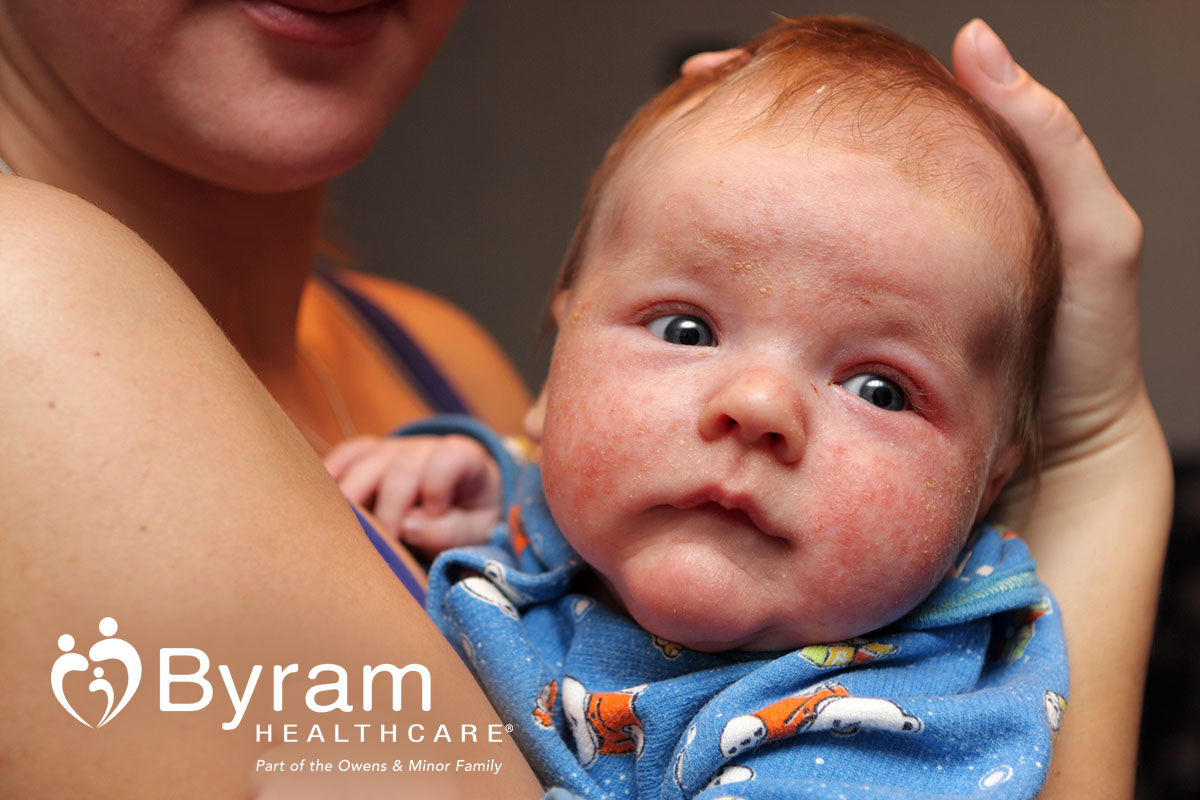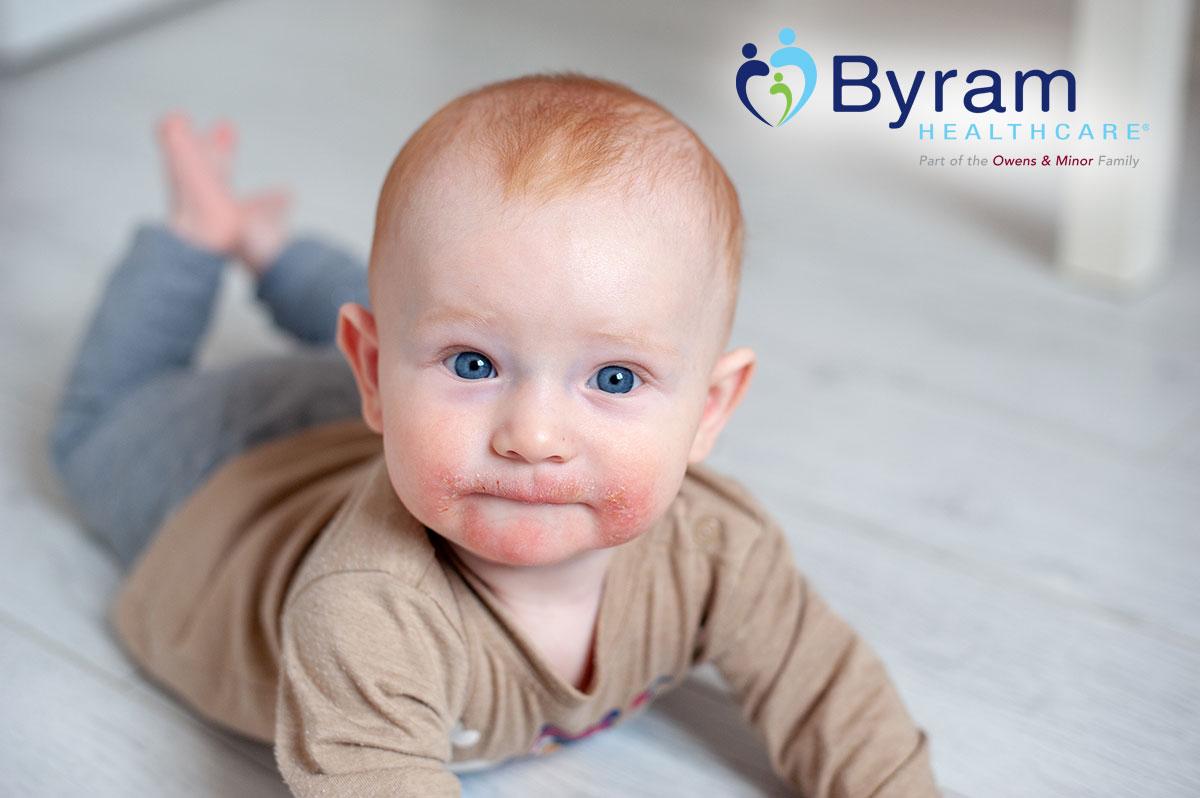Types of Baby Rashes
After childbirth, your entire world will revolve around your son or daughter. It’s inevitable. A mother’s instinct is powerful and creates an inseparable bond. This means that you will do everything in your power to keep your baby safe—including calling your pediatrician every time you think something is wrong. As a new mom, this is absolutely normal. We start to obsess about whether or not our baby’s are healthy and when something happens, it startles us.
One of the most common things that cause concern is noticing a rash on your baby’s skin. Babies have very sensitive skin and they’re just starting to adapt to the outside world. Because of this, babies are prone to rashes. To help you differentiate when you need to head to your pediatrician or when you should stay calm, we’ve put together a comprehensive article on the types of baby rashes to look out for.
Common Causes of Baby Rashes
Before jumping in, it’s important to understand the different causes of baby rashes. Some are caused by illness while others are simply allergies or irritants. Here are some of the main causes of baby rashes:
- Fabric Irritation
- Fragrance Irritation
- Chemical Irritation
- Heat
- Allergies
- Friction
- Dampness
- Viral Infections
- Bacteria Infections
Rashes can appear on almost any part of your baby’s body. To make sure you aren’t missing anything, inspect the entirety of their skin during baths, diaper changes, and every day snuggles.
Most Common Baby Rashes
There are quite a few common types of baby rashes. They’re usually harmless and caused by something simple. Almost all babies will experience at least one of these types of rashes.
Dry Skin
Babies, toddlers, teenagers, and adults alike suffer from dry skin. If it’s noticeable on your baby, don’t worry. Almost every baby experiences this during the first few months of life. Get some baby-safe lotion and apply generously after bath times.
Baby Acne
Baby acne appears most frequently on the face, but can appear on other parts of the body as well. It looks like small, pink pimples and is often caused by maternal hormones in the womb. Only time will heal baby acne, so don’t try to use topical creams for help.
Diaper Rash
Arguably one of the most common baby rashes is diaper rash. This happens when your baby’s skin is irritated from prolonged contact with urine or feces. It also occurs from tight fitting diapers. Read all about diaper rash and how to treat it here.
Cradle Cap
Cradle cap presents itself with a greasy, yellowish crust near the scalp. This crust is often paired with a red, irritating rash on or near the face and in your baby’s armpits. Take your baby to your pediatrician to treat cradle cap, as treatment plans will differ depending on symptoms.
Drool Rash
Babies drool… a lot. This drool irritates the skin around your baby’s mouth or even chest (if it’s dripping excessively). Drool rash most commonly occurs during teething, but can present itself at any time. Prevention is the best way to avoid drool rash, but there are also a number of treatments if your baby experiences it.

Eczema
Eczema presents itself in red, itchy patches on your baby’s chest, arms, legs, face, elbows, or behind the knees. There are a number of things that might be causing eczema, so you should talk to your pediatrician to try and learn the triggers. Treatment includes using gentle soaps, detergents, moisturizers, and in some cases steroid creams.
Keratosis Pilaris
Keratosis pilaris, commonly known as “chicken skin,” is a harmless condition where the skin takes on a rough, bumpy appearance similar to chicken skin. There are treatments to help clear up keratosis pilaris, but it often persists throughout childhood and adolescent years.
Milia
Most new parents notice small, white bumps on their baby’s face. These are called milia and are caused by blocked oil glands. As your baby’s glands enlarge and open, milia tends to go away on its own.
Slapped Cheek
Slapped cheek is caused by a viral infection called fifth disease. It manifests in bright red rashes on both cheeks and spreads to the body and limbs. While this primarily affects older children, it is possible for newborns and babies to be infected as fifth disease is contagious. Learn more about fifth disease and slapped cheek here.
Heat Rash or Prickly Heat
This rash appears when your baby overheats and occurs in areas that your baby sweats—think neck, diaper area, and armpits. Keep your baby cool and take extra measures to ensure these areas stay dry for heat rash to go away.
Hives
Hives are the body’s way of reacting to common irritants and allergies. The rash is raised, red, and itchy and appears on the chest, stomach, back, throat, or limbs. If your baby experiences hives, we recommend going into your pediatrician or a specialist to try and determine the underlying cause.
Candidiasis (Thrush)
Candidiasis is a fancy term for the common fungal infection we know as thrush. While it’s most commonly found on tongues, candidiasis appears in the diaper region or creases of your baby’s thighs as well. Depending on the location of candidiasis, the symptoms will differ. On your baby’s tongue it will look like dried milk that doesn’t come off and on their body it will appear as an intense red rash with outer lying bumps. It’s treated with antifungal gels and creams.
Erythema Toxicum
This rash appears in red blotches that have ill-defined borders. It’s often slightly raised and may or may not have small white or yellow dot in the center. While this rash’s cause is still unknown, it tends to clear up without treatment. If you’re worried or erythema toxicum doesn’t go away, take your baby in to see your pediatrician.
Less Common Baby Rashes
In addition to the common rashes that appear on newborns and babies, there are a few less common ones to watch out for as well. These rashes can present themselves with other symptoms, which we will describe individually for each.
Hand, Foot, and Mouth Disease
This is contagious viral illness that is common in children who are in childcare or kindergarten. It is accompanied by a fever and manifests with blisters alongside a rash localized on the palms of the hands and soles of the feet. This is a mild condition that often goes away on its own, but we recommend seeing your pediatrician if you notice any symptoms of hand, foot, and mouth disease.
Infectious Rashes
Thanks to vaccines, most infectious rashes are preventable. However, prior to vaccination, or if you opt to avoid vaccinations, these rashes are still possible. Even if you have vaccinated your baby, be on the lookout for signs and symptoms of measles, chicken pox, scarlet fever, and roseola infantum.
Other infectious rashes include impetigo, molluscum contagiosum, ringworm, and meningitis. If you think your baby may have meningitis, go to the emergency room immediately. It is a very serious illness that is fatal if not treated.
Salmon Patches
Salmon patches, which are also known as stork bites or angel’s kiss, are nothing for serious concern. They appear as a darkened area of the skin due to concentrated nests of blood vessels. These tend to go away on their own.
Mongolian Spots
Mongolian spots are common in dark-skinned babies and appear as flat, gray-blue patches. Most parents see them and think they’re a bruise, but they’re caused by a lack of pigmentation in the top layer of the skin. Mongolian spots are similar to salmon patches in that they are harmless and will eventually fade away.
When to Be Concerned
Most rashes are nothing for parents to be concerned about, but if you notice any fluid-filled blisters, small red or purplish dots over the body, or a fever that lasts for more than a few days, call your doctor immediately. These symptoms are often signs of more serious infections and need to be treated as soon as possible. If you’re worried about a small rash here and there, it’s always okay to call your pediatrician. They’re used to getting excessive calls from new moms.
Conclusion
If your newborn or baby shows any signs of these types of rashes, don’t worry. Take the time to understand what is going on before jumping to conclusions. If you aren’t sure, or you want to be 100% certain, call your pediatrician. It’s always better to get a medical opinion than try to self-diagnose with the Internet. If you’re looking for more great pregnancy tips, info, and product reviews head over to Byram Healthcare today. As always, new and expecting mothers are eligible to receive a breast pump, at no cost, through the Affordable Care Act.
If you have any stories, home remedies, or experiences with baby rashes, head over to our Facebook page and leave a comment today!






